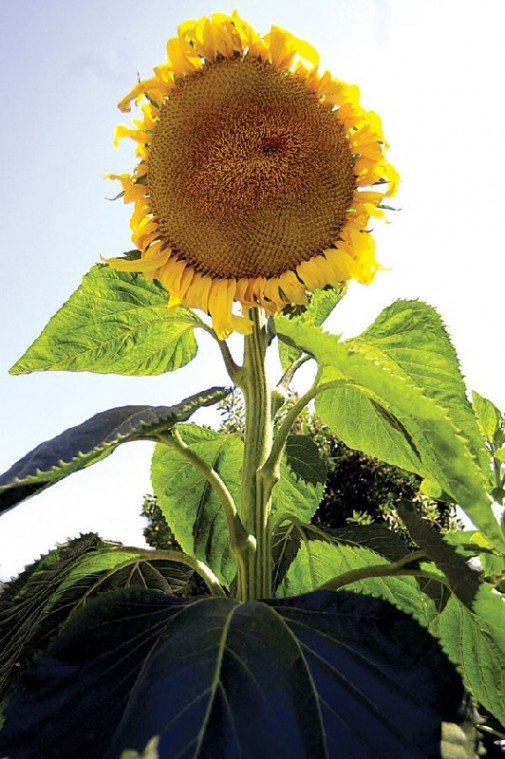n by Melania Zaharopoulos Staff Writer
The fiery sunflower, a native of North America, may look fairly pedestrian, but the sunny yellow flower has a rich history around the globe.
Cultivated by Native Americans in the Southwest as early as 3,000 B.C., the sunflower may have been domesticated before corn, according to the National Sunflower Association. Native people bred the wild plant into several single-headed varieties producing black, white and red seeds that were used to create a variety of foods.
The plants were transported to Europe by Spanish explorers around 1500 A.D. and quickly developed ornamental appeal. By 1716, a patented method of extraction for sunflower oil was developed. It gave birth to a commercial industry that would grow to span Europe, Russia, Canada and the United States, according to the NSA.
Today, thanks to the sunflower’s broad appeal for ornament, consumption and oil production, there are more than 60,600 varieties of the plant available, according to Michael Cahn, a member of the Santa Clara County Master Gardeners.
Ornamental flowers have been bred to mimic the colors of cappuccino and Chianti while commercial farmers have bred stems with high oil content or increased seed production, but some are merely bred for visual interest. The world’s tallest variety is called Cyclops and its smallest is known as an Elf.
“I call it a belly flower because you have to get down on your belly to really see it clearly,” said Cahn.
No matter their type – from specially bred bicolored blooms to patented happy faces – sunflowers all share one characteristic: they turn with the sun.
“They’re not named sunflowers because they look like the sun,” said Cahn. “They follow the course of the sun’s light, which allows the insects that would tend to fertilize them to see them. Insects are attracted to the brighter color, and the sun really lights up the flower.”
Most sunflowers originate from intentionally planted seeds, though some South Valley residents may find “volunteers” in their gardens thanks to birds and other fauna in the area, said Cahn.
Fresh sunflowers may be cut and placed in water, said Barbara Sandels, co-owner of Precious Petals in San Juan Bautista with her daughter Kimberly Sandels. They tend to droop, but for a more precise arrangement, gardeners can insert a floral pick into the flower’s thick stem.
To keep the flower fresh as long as possible, Sandels recommended cutting the flower’s stems under water every few days and refreshing the water frequently.
“You can add a preservative to the water so they get a bit of new life, but cutting them is sort of like an open wound,” said Sandels. “When you cut the stem under water, it will immediately suck water up the stem and rehydrate the flower.”
For gardeners who would prefer to eat the plant’s seeds, Cahn recommended waiting to cut the stem until the flower’s petals fall off. Allow the head of the plant to dry indoors and, when it is completely dry, run a hand across it to shake the seeds loose onto a pie plate, he said, adding that the seeds should be roasted at 150 or 200 degrees for one hour and lightly salted.
Sunflowers in Russia
One of the world’s largest cultivators of sunflowers is Russia, where the plants were popularized as ornamental growths by flower-lover Czar Peter the Great, according to the National Sunflower Association.
A large-scale industry sprang up in the country later centering on the production of oil from the sunflower plant. It was particularly popular as an alternative cooking oil, in large part since the Russian Orthodox Church forbade cooking with oils during lent, according to the NSA.
Sunflower oil was omitted from the church’s list of banned substances, which led to skyrocketing sales of the plant’s oil. The substance was so popular that, by the early 19th century, Russian farmers cultivated more than 2 million acres of the flowers annually, according to the NSA.













